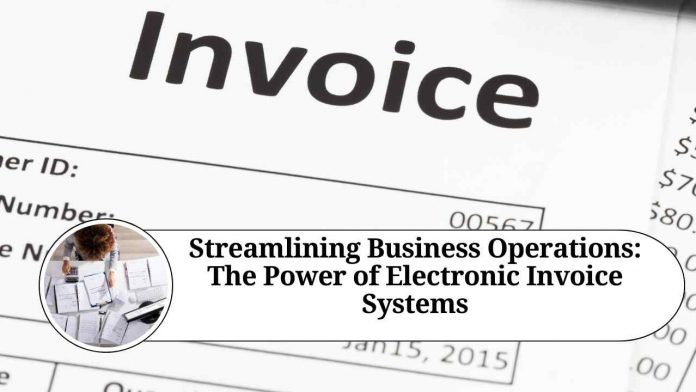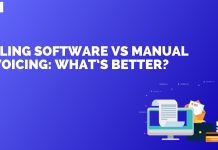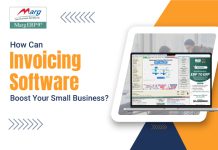Introduction
In today’s digital era, businesses across the globe are embracing technological advancements to optimize their operations and enhance productivity. One area where significant progress has been made is in the realm of invoicing. Traditional paper-based invoices are gradually being replaced by electronic invoice systems, revolutionizing the way businesses send, receive, and process invoices. In this blog, we will explore the benefits and functionality of electronic invoice systems and why they are becoming an indispensable tool for modern businesses.
What is an Electronic Invoice System?
An electronic invoice system, also known as e-invoicing or digital invoicing, is a software-based solution that enables the creation, delivery, and management of invoices in a fully electronic format. Unlike traditional paper-based invoices, electronic invoices are generated, transmitted, and stored digitally, eliminating the need for physical documents and manual processes.
Simplified Invoicing Process:
Electronic invoice systems streamline the entire invoicing process, making it faster, more accurate, and efficient. With an electronic system in place, businesses can create professional-looking invoices using pre-designed templates or customized formats. The system automatically populates relevant information such as customer details, product descriptions, quantities, and prices, minimizing errors and ensuring consistency.
Cost Savings and Time Efficiency:
Adopting an electronic invoice system can result in significant cost savings for businesses. By eliminating paper, printing, and postage expenses, companies can drastically reduce their administrative overheads. Additionally, the automation provided by these systems reduces the time spent on manual data entry and invoice processing, freeing up valuable resources to focus on core business activities.
Enhanced Accuracy and Security:
Manual invoicing processes are prone to errors, leading to payment delays and customer dissatisfaction. Electronic invoice systems minimize the risk of human error by automating calculations, ensuring accurate invoicing and reducing the need for time-consuming cross-checks. Furthermore, digital invoices are securely stored in a centralized database, protecting sensitive financial information and enabling easy retrieval when required.
Faster Payments and Improved Cash Flow:
The speed at which invoices are delivered and processed directly impacts a company’s cash flow. Electronic invoice systems enable businesses to send invoices instantly via email or online portals, significantly reducing the time it takes for customers to receive and review them. This expedites payment cycles and improves overall cash flow, helping businesses maintain healthy financial operations.
Compliance with Regulatory Standards:
In many countries, governments are encouraging or mandating the use of electronic invoicing to improve tax compliance and combat fraud. Electronic invoice systems provide built-in features that ensure compliance with local regulations, such as digital signatures and encryption. By adopting such systems, businesses can stay updated with evolving regulatory requirements and avoid penalties associated with non-compliance.
Seamless Integration and Scalability:
Electronic invoice systems are designed to integrate seamlessly with existing accounting software and enterprise resource planning (ERP) systems. This integration simplifies data synchronization, minimizes manual data entry, and enhances overall workflow efficiency. Moreover, electronic invoice systems are scalable, accommodating the growth of businesses without requiring significant investments in additional infrastructure.
Conclusion
In an increasingly digital world, electronic invoice systems have become a game-changer for businesses of all sizes. The advantages they offer, including streamlined processes, cost savings, improved accuracy, faster payments, and compliance with regulatory standards, make them an essential tool for enhancing operational efficiency and maintaining a competitive edge. By embracing electronic invoicing, businesses can optimize their financial processes, save valuable time and resources, and unlock new levels of productivity.
Read more useful content:
Frequently Asked Questions (FAQs)
Q. What exactly is an electronic invoice system?
An electronic invoice system is a software-based solution that enables businesses to create, send, receive, and manage invoices in a digital format. It eliminates the need for paper invoices and streamlines the invoicing process through automation.
Q. How does an electronic invoice system work?
An electronic invoice system typically involves the use of specialized software or online platforms. Users can create invoices electronically, either by using pre-designed templates or customizing their own formats. The system automates calculations, populates relevant information, and allows for easy customization. Invoices can be sent directly via email or accessed through secure online portals, making the entire process faster and more efficient.
Q. What are the benefits of using an electronic invoice system?
Using an electronic invoice system offers several advantages. It simplifies the invoicing process, reduces administrative costs, improves accuracy, enhances security, accelerates payment cycles, ensures compliance with regulatory standards, and allows for seamless integration with existing accounting and ERP systems. Overall, it saves time and resources while improving cash flow and productivity.
Q. Are electronic invoices legally valid?
Yes, electronic invoices are legally valid in many countries and regions. Governments around the world have recognized the authenticity and reliability of electronic invoicing and have implemented regulations to support its use. However, it’s important to ensure compliance with local laws and regulations when implementing an electronic invoice system.
Q. Is it necessary to have technical expertise to use an electronic invoice system?
Most electronic invoice systems are designed to be user-friendly and intuitive. While some basic understanding of the system’s features and functionality is helpful, technical expertise is not typically required. Training and support are often provided by the software provider to help users get started and make the most of the system.
Q. Can an electronic invoice system integrate with existing accounting software?
Yes, electronic invoice systems are usually designed to integrate seamlessly with popular accounting software and ERP systems. This integration allows for the automatic synchronization of data, reducing manual data entry and streamlining the overall workflow. It’s advisable to check compatibility and integration capabilities when choosing an electronic invoice system.
Q. Are electronic invoices more secure than paper invoices?
Electronic invoices offer enhanced security compared to paper invoices. They can incorporate digital signatures and encryption, providing an added layer of protection for sensitive financial information. Additionally, electronic invoice systems often include secure storage and backup features, reducing the risk of data loss or unauthorized access.
Q. Can an electronic invoice system be customized to match a company’s branding?
Yes, most electronic invoice systems allow for customization to reflect a company’s branding. Users can often personalize the appearance and layout of invoices, including adding company logos, colors, and specific design elements. This customization helps maintain brand consistency and professionalism in customer communications.
Q. Can an electronic invoice system handle different currencies and tax requirements?
Yes, electronic invoice systems are designed to handle diverse currencies and tax requirements. They can accommodate multiple currencies, apply appropriate tax rates based on regional regulations, and generate invoices that comply with specific tax requirements. This flexibility ensures accuracy and compliance, regardless of the geographical location of customers or the complexity of tax regulations.
Q. How can I get started with an electronic invoice system?
To get started with an electronic invoice system, consider researching reputable software providers or online platforms that offer such solutions. Look for features that align with your business needs, evaluate pricing options, and consider factors like user-friendliness, customer support, and integration capabilities. Once you choose a suitable system, follow the provider’s instructions for setup and implementation, and train your team on how to use the system effectively.




















